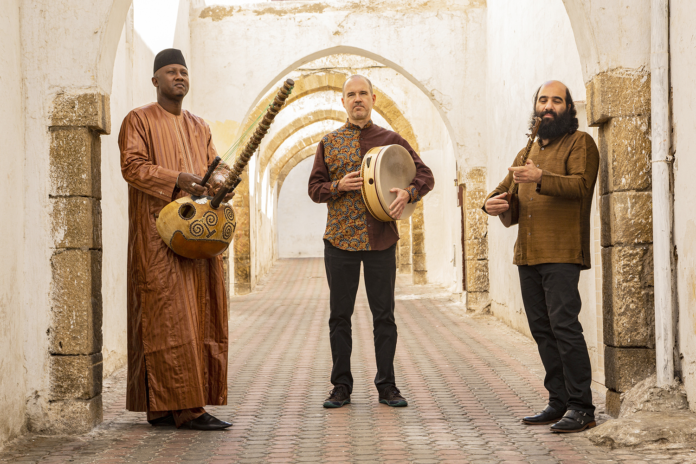May 01, 2025 —
Modern-day Istanbul, known throughout history as Constantinople, has been a crossroads of cultures for centuries, a place where East and West meet.
The band, Constantinople, weaves that history into its music. Constantinople brings its global, improvisational sounds to the North Country with a concert Sunday, May 4 at 3pm at the historic Methodist Church in Saranac, focusing on the deep musical traditions of Persia and Senegal. The concert is a production of Hill and Hollow Music.
Kiya Tabassian leads the group and plays the Persian setar, the predecessor of the Indian sitar. He’ll be joined by Senegalese griot and kora player Ablaye Cissoko and percussionist Patrick Graham.
Tabassian spoke with David Sommerstein. Their conversation has been lightly edited for clarity.
KIYA TABASSIAN: This project is a meeting between our music, our traditions, and our souls as musicians. We create a music that also involves the audience, because it’s a music very much rooted in improvisation, in the present moment.
We always like to play in a real sense of the world, to challenge each other, and to establish a real dialogue, a real and deep dialogue between each other. The audience will hear this through these instruments – the setar, the kora – and two voices. I sing in the Persian language, Ablaye sings in Senegalese, in the Mandinka language. The audience will see and hear these different elements, but eventually they will see and hear just one huge tableau, one music. That’s what we would like to achieve.
DAVID SOMMERSTEIN: Tell me a little bit about your instrument, the setar. Now, this is not the Indian sitar, this is the Persian setar.
TABASSIAN: Exactly, the Persian setar. „Se“ in Farsi, the Persian language, means „three“, and „tar“ means string. It’s a very, very old instrument. In some archaeological searches, we found some statues of musicians dated from 3,500 years ago in the region of Persia.
It’s a Persian long-necked lute. The Indian sitar, which is maybe a little bit more known, comes from the Persian setar when this instrument went to North India. They took this instrument and they transformed it into what we know today as Indian sitar. But the Persian setar has always been alive as an instrument.
It’s a very refined instrument. Now it has four strings because the third one is doubled. It has 27 frets on the neck of the instrument, so I can play all the semitones and some microtones. It has a very refined sound.
SOMMERSTEIN: You’ll be playing with the kora, along with percussion. You say that the kora and the setar are like „instruments that come from the depths of the earth“, that they have always existed side by side. What do you mean by that?
TABASSIAN: They come from far away from each other. But setar, as I said, dates its origins to 3,500 years ago. Kora goes back at least to the Middle Ages. It’s a very, very important instrument in West African society, in the whole Mandinka kingdom, you know? So these are instruments with lots of background and heritage, cultural heritage. Each note is played by these instruments has a history and a story behind it.
Listeners will hear that these two instruments, even though they come from different continents – kora from West Africa, Setar from Persia, from the East – when they play together, and I would ask the audience to judge for them themselves, but what we are told all the time is that the listeners can even not distinguish which sound was from the kora and which sound was from the setar. These two instruments go so well together and complement each other and become at some point one instrument.
I think also because Ablaye and I, it’s been more than ten years that we have been playing together and closely collaborating together. There is a brotherhood between us each time we see each other. He lives in Senegal, I live in Montreal, but we do see each other and play together maybe fifty times a year. We are very happy to share the stage and share moments together. So there is a very close relationship between us, as human beings. And I think this is also felt on the stage.


